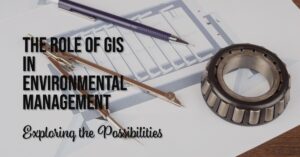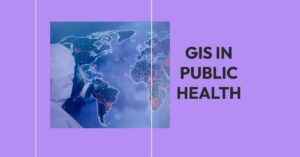Introduction to Spatial Analysis
What is GIS?
A Geographic Information System (GIS) is a computer system that collects, saves, analyzes, organizes, and displays data about locations on the Earth’s surface. So, why should you be concerned? Because it is changing the way we perceive and interact with our surroundings. greater decision making, increased efficiency, and greater communication are just a few examples.
Importance of Spatial Analysis
Spatial analysis, an important component of GIS, entails the investigation and understanding of patterns and processes. It’s like looking at the world through a magnifying glass, finding underlying patterns and trends that conventional analysis could overlook. Spatial analysis is used in a variety of sectors, including
- Government: Governments utilize spatial analysis to manage land, track resources, and plan for development.
- Business: Businesses employ spatial analysis to make marketing, sales, and logistics choices.
- Non-profit: Non-profits utilize spatial analysis to study environmental changes, arrange disaster relief, and advocate for social change.
The Process of Spatial Analysis
Data Collection in GIS
The first step in geographical analysis is data acquisition. Consider the planet to be a massive jigsaw puzzle, with each piece representing a distinct form of geographic data. Does that sound complicated? It can be, but GIS tools make the task manageable, though not exciting.
Data Analysis in GIS
Data Visualization
After collecting data, GIS makes it visually understandable through maps and other graphic displays. It’s like painting a picture with data. Each color, symbol, or dot tells a story.
Spatial Statistics
After the data has been represented, GIS employs spatial statistics to interpret and comprehend the patterns and correlations between various geographic occurrences. Have you ever wondered how meteorologists forecast weather patterns? It’s spatial analysis, you guessed it!
Types of Spatial Analysis
Buffer Analysis
Buffer analysis is similar to drawing an imaginary circle around a spot to determine what lies within a specific distance. It’s extremely handy for answering questions about proximity, such as how many hospitals are within a 5-mile radius of a specific area.
Network Analysis
Network analysis, on the other hand, focuses on the connections between various sites. Have you ever wondered how Google Maps determines the shortest path from point A to point B? That’s network analysis in action!
Overlay Analysis
Overlay analysis examines linkages and impacts by combining various layers of data. Consider stacking several distinct maps on top of one another to see how various aspects interact. It’s a valuable resource for environmental studies, urban planning, and much more.
Applications of Spatial Analysis in GIS
Urban Planning
Spatial analysis is a powerful tool that can be used to solve a wide variety of problems in urban planning. Some of the most common applications of spatial analysis in urban planning include:
- Site selection: Spatial analysis can be used to identify the best location for a new development. This can be done by considering factors such as proximity to transportation, access to amenities, and environmental constraints.
- Land use planning: Spatial analysis can be used to plan for the use of land within a city. This can be done by considering factors such as population growth, economic development, and environmental sustainability.
- Transportation planning: Spatial analysis can be used to plan for the transportation system within a city. This can be done by considering factors such as traffic congestion, public transportation, and bicycle and pedestrian paths.
- Environmental planning: Spatial analysis can be used to plan for the environment within a city. This can be done by considering factors such as air quality, water quality, and noise pollution.
- Social planning: Spatial analysis can be used to plan for the social fabric of a city. This can be done by considering factors such as crime, poverty, and education.
Environmental Studies
Spatial analysis is a valuable tool for understanding and solving environmental challenges. It can be used to identify places at risk of environmental degradation, follow the migration of contaminants, and measure the environmental impact of human activities.
Here are some specific examples of how spatial analysis is being used in environmental studies:
- Identifying areas at risk of environmental degradation: Spatial analysis can be used to identify areas that are at risk of environmental degradation, such as areas that are prone to flooding, landslides, or wildfires. This information can be used to develop plans to mitigate the risk of environmental damage.
- Tracking the movement of pollutants: Spatial analysis can be used to track the movement of pollutants, such as air pollution or water pollution. This information can be used to identify the sources of pollution and to develop plans to reduce pollution levels.
- Assessing the impact of human activities on the environment: Spatial analysis can be used to assess the impact of human activities on the environment, such as the impact of agriculture, industry, or transportation. This information can be used to develop plans to reduce the impact of human activities on the environment.
Transportation and Logistics
Spatial analysis is a useful technique in transportation and logistics that may be used to solve a wide range of problems. Some of the most common spatial analysis applications in transportation and logistics are:
- Route optimization: Spatial analysis can be used to optimize routes for transportation vehicles. This can help to reduce travel time and fuel costs.
- Fleet management: Spatial analysis can be used to manage fleets of transportation vehicles. This can help to ensure that vehicles are being used efficiently and that they are properly maintained.
- Warehouse management: Spatial analysis can be used to manage warehouses. This can help to ensure that goods are stored in the most efficient way possible and that they are easily accessible when needed.
- Demand forecasting: Spatial analysis can be used to forecast demand for goods and services. This can help to ensure that transportation and logistics resources are properly allocated.
- Risk assessment: Spatial analysis can be used to assess the risks associated with transportation and logistics operations. This can help to identify potential problems and take steps to mitigate them.
The Future of Spatial Analysis
Spatial analysis is not a static field. It’s evolving, with advancements in technology and data collection methods opening up new possibilities. Machine learning and big data, for example, are paving the way for even more detailed and complex spatial analyses.
The future of spatial analysis is bright. As technology continues to advance, spatial analysis will become even more powerful and versatile. Here are some of the trends that are expected to shape the future of spatial analysis:
- The rise of big data: The amount of spatial data available is growing exponentially. This data can be used to improve spatial analysis by providing a more comprehensive understanding of the world.
- The development of new spatial analysis tools: New tools are being developed that make it easier to perform spatial analysis. These tools are making spatial analysis more accessible to a wider range of people.
- The increasing importance of spatial thinking: Spatial thinking is the ability to think about the world in terms of its spatial relationships. This skill is becoming increasingly important in a world that is becoming increasingly interconnected.
Conclusion
From predicting weather patterns to helping us navigate our daily commute, spatial analysis in GIS plays an integral role in our lives. As technology continues to advance, we can only expect its influence to grow. So, next time you look at a map, remember there’s a lot more to it than meets the eye!
FAQs
- What is the main purpose of spatial analysis in GIS? Spatial analysis in GIS is used to understand patterns and relationships between different geographic phenomena.
- How is spatial analysis used in urban planning? In urban planning, spatial analysis is used to study city growth and change, assisting in the design of efficient transport systems and zoning plans.
- Can spatial analysis in GIS help in environmental studies? Yes, environmental scientists use GIS to study a variety of phenomena such as climate change, wildlife habitats, and natural disasters.
- What types of spatial analysis are commonly used? Common types of spatial analysis include buffer analysis, network analysis, and overlay analysis.
- What is the future of spatial analysis? The future of spatial analysis is promising, with advancements in technology and data collection methods opening up new possibilities, such as integration with machine learning and big data.


